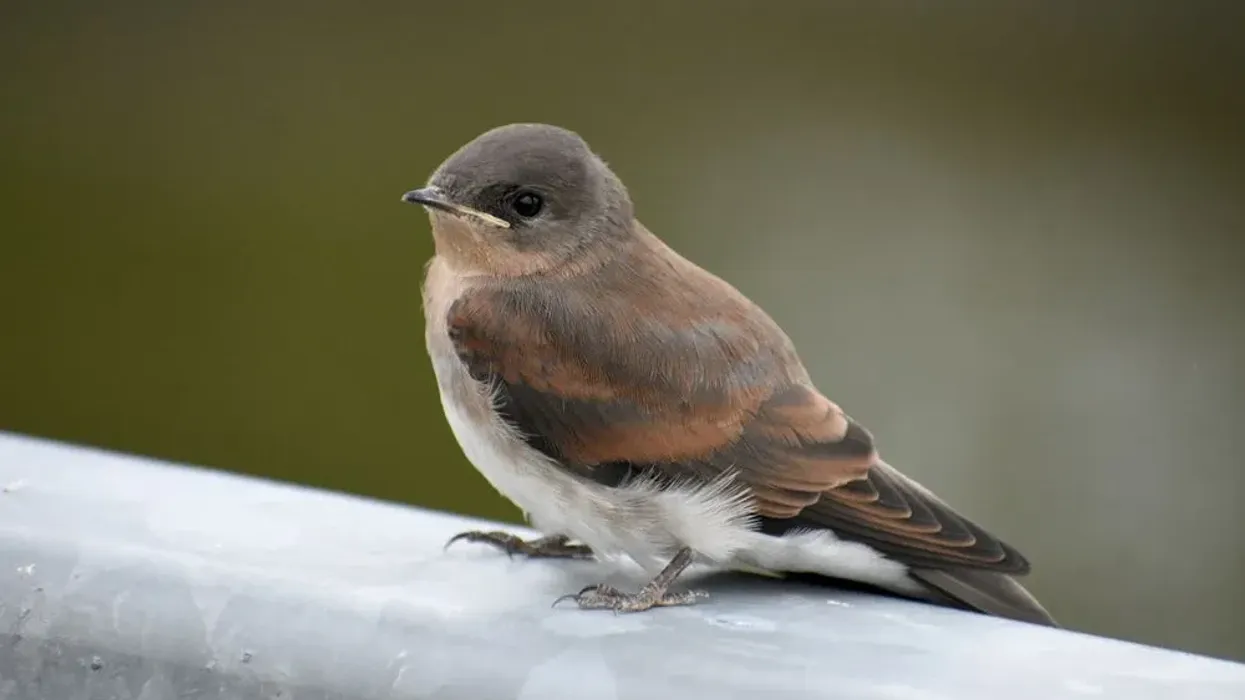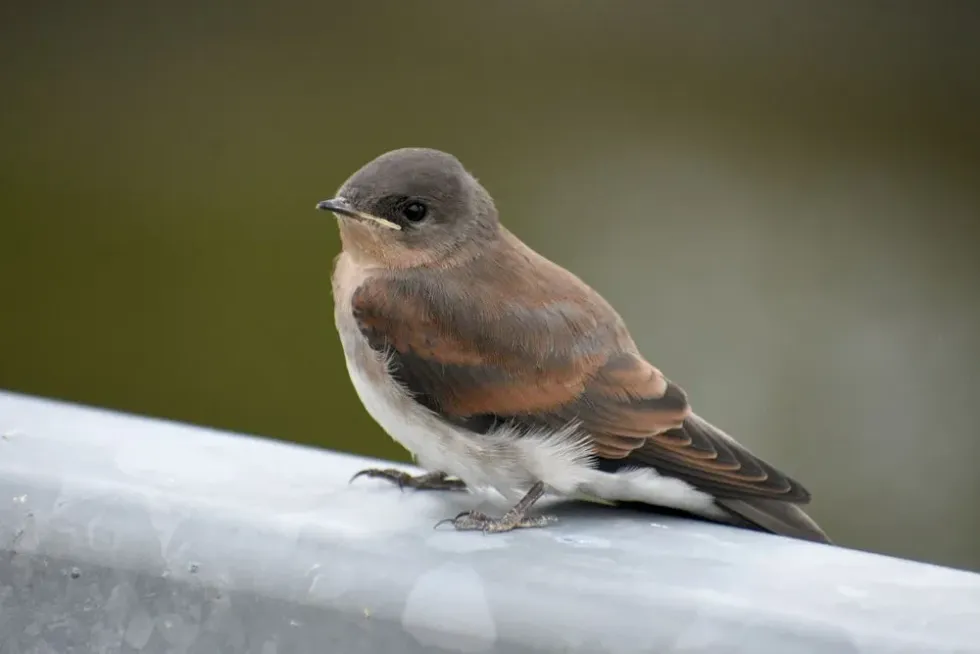If you live near a body of water, you may see the swallow species. These small, graceful birds soar through the skies with ease.
In this article, we will learn about the Stelgidopteryx genus's rough-winged swallow, specifically its two variants, the northern rough-winged swallow and the southern rough-winged swallow. Learn about these birds' physical characteristics, feeding habits, conservation status, habitat and ecology, breeding patterns, and other important information.
For example, the northern rough winged nest can be found in crevices in dirt banks and other vertical locations.
Unlike other swallow species, they do not nest in colonies. Currently, they are listed as Least Concern in the IUCN Red List, however, their population has faced a decrease.
Do you know what the northern rough-winged swallow flight looks like? Continue reading to find out what the answer is! Check out Kidadl's articles on other bird species such as the bee-eater and the hummingbird.
Rough-Winged Swallow Interesting Facts
What type of animal is a rough-winged swallow?
The rough-winged swallow is a lesser-known member of the swallow species family. It gets its name from the presence of tiny serrations in the bird's wing feathers. As a result, the wing bars are rough or saw. An image of this bird will melt your heart.
What class of animal does a rough-winged swallow belong to?
The rough-winged swallow is a bird in the Aves family.
How many rough-winged swallows are there in the world?
There are no total population estimates for rough-winged swallows. In the case of the southern rough winged swallows, global estimates indicate a stable population of approximately 50 million mature individuals. The population estimates for the northern rough winged swallow (Stelgidopteryx serripennis), on the other hand, are unavailable. This species, however, is thought to be declining.
Where does a rough-winged swallow live?
The rough-winged swallows can be found in open areas around wetlands like rivers, lakes, and streams.
What is a rough-winged swallow's habitat?
This bird species habitat forests, wetlands, rocky areas, shrublands, and grasslands. Primarily, they can be found near water bodies. Open habitats like sandbanks, gorges, or artificial sites make for nesting sites for these birds.
The northern rough-winged swallows can be found near all three, terrestrial, freshwater, and marine systems. They can be found in Canada, parts of the US like North America, Florida, and Tennessee, and Mexico.
The southern rough winged swallow species are largely found in terrestrial and freshwater systems, more near water. It is found in various countries in Central America like Argentina, Brazil, Costa Rica, Peru, and Venezuela.
Who do rough-winged swallows live with?
Unlike other swallows like the bank swallows, the rough-winged swallows do not nest in colonies. Instead, you will find the southern and northern rough-winged swallow nest in small pairs of two or three. The male protects the family from intruders by guarding the nest.
The rough-winged swallow (northern and southern) has a cavity-nesting style. During the breeding season, they build their nest in dirt banks, abandoned burrows, rock crevices and man-made vertical spaces like tunnels, drain holes, and so on.
First, the southern winged swallow or northern rough-winged swallow will dig a burrow using their feet and then construct a nest using grass, twigs, and stems. The nest will be built at the edge of the cavity or burrow.
How long does a rough winged swallow live?
The lifespan of the rough-winged swallow (northern or southern) is not known.
How do they reproduce?
The exact details of how the southern and northern rough-winged swallows court is yet to be discovered. The male chases the female during courtship by spreading and displaying its white pointed wings.
The rough-winged swallow (northern rough-winged swallow and southern rough-winged swallow) is monogamous and only has one brood per season. The clutch size ranges from four to eight, and the eggs are white. The eggs are incubated by the female for 12-16 days.
When the eggs hatch, the adults share responsibility for feeding the young northern rough-winged swallow. After 19-21 days of hatching, the young will leave the burrows.
What is their conservation status?
According to the International Union for Conservation of Nature (IUCN), both species of the rough-winged swallow (northern and southern) are of the Least Concern.
Rough-Winged Swallow Fun Facts
What do rough-winged swallows look like?
The physical description of the rough-winged swallow is plain brown in color with a white throat and breast that is buffy. The wings of this bird as the name suggests are roughly marked with tiny serrations whose purpose is not clear.
The feathers on the wings for the males are curved and pointed in the case of the females. The tail is short, under tail white and wings are narrow. The legs of the rough-winged swallow are short, meant more for walking than perching.
Compared to the S. serripennis, the S. ruficollis has a lighter-colored back. Juveniles look similar to adults except for the reddish-brown color on their wing bars.
How cute are they?
The rough-winged swallow is quite adorable. It may not be as colorful as other birds, but its allure comes from its small size and soft brown coat. It even appears extremely cute in an image.
How do they communicate?
The rough-winged swallow is no chatterbox. During courtship, however, the male sings some notes ('jee,' 'jrr') to attract and protect their mate. Intruders are usually met with aggressive behavior by the adult pairs.
This aggression manifests itself in fights and sparring with its feet and bill. The female will have some alarm calls. When taking off or in flight, the northern rough-winged swallow's rough wing makes a harsh whirring sound.
How big is a rough-winged swallow?
The bird measures approximately 5-5.5 in (12.7-13.97 cm) in length. It has a 14 in (35.56 cm) wingspan. Bank swallows are smaller than rough-winged swallows.
How fast can a rough-winged swallow fly?
The maximum speed at which these birds can fly has yet to be determined.
How much does a rough-winged swallow weigh?
It is estimated the birds weigh around 0.035 lb (0.015 kg). When compared to other birds like the purple martin, the northern rough-winged swallow is quite lightweight.
What are the male and female names of the species?
The male and female rough-winged swallow (northern rough-winged and southern rough-winged swallow) are referred to as adults.
What would you call a baby rough-winged swallow?
The young hatchling will be referred to as a juvenile northern rough winged swallow.
What do they eat?
This bird species forages all day in the air, on the ground, and on the water's surface. This range of species forage alone but can join other birds if there are plenty of feeding opportunities.
They feed on their prey while flying. This is possible due to their large mouths, which allow them to catch flying insects in mid-air.
Flying insects such as flies, wasps, bees, winged ants, true bugs, damselflies, caterpillars, and beetles are their primary food source. Adults feed the young with masticated versions of the insects.
When the birds are flying, they will also drink. Swooping low on rivers or other bodies of water allows the bird to quench its thirst without getting its pointed wings wet.
Are they poisonous?
No, the southern and northern rough-winged swallows are not poisonous.
Would they make a good pet?
No, these birds are not suitable as pets. For nesting and breeding, these wild birds require a specific habitat.
Did you know...
The migratory birds arrive in Massachusetts in April.
John James Audubon discovered this bird species in 1819.
The adults protect their burrows from intruders.
Other mammals, such as snakes, badgers, and weasels, prey on the birds.
The true sparrow, that's another species that ranges from the swallow species, is also a small bird with small legs. However, it has a greenish plumage.
How to tell a bank swallow from a northern rough-winged swallow
The bank swallow breeds in colonies, whereas the northern rough-winged swallow breeds alone. When it comes to size, the northern rough-winged swallow is larger.
It is easy to distinguish the bank swallow from the northern rough-winged swallows, as the bank species have a clear dark brown band around its breast that separates the white throat from the lower breast. The tail of the bank swallow is noticeably slimmer.
How did rough-winged swallows get their name?
The rough and serrated texture on the wings of the southern and northern rough-winged swallows earned them their names. When you see a northern rough-winged swallow in flight, you won't notice the serrations. Only when the bird is at eye level is the minute detail visible.
Here at Kidadl, we have carefully created lots of interesting family-friendly animal facts for everyone to discover! Learn more about some other birds including swallow-tailed kite facts and pelican facts pages.
You can even occupy yourself at home by coloring in one of our free printable bird coloring pages.









